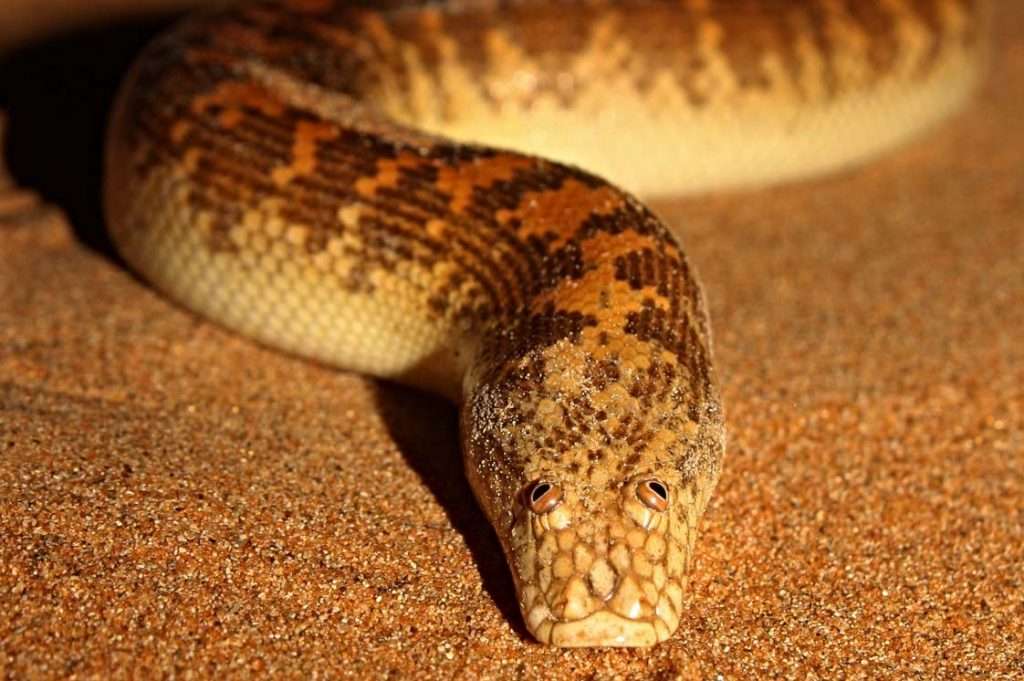
Description:
Scientific name: Eryx jayakari
Life span: 18–20 years
The Arabian sand boa is a tiny snake that reaches a length of about 38 cm overall (including the tail) (15 in). On the top of the skull, which is wedge-shaped and has a blunt nose, are two tiny eyes. The color of this snake is a yellowish-gray or sandy-brown with white flecks and dark transverse bands.
Native Region/Habitat
The Arabian peninsula is the natural habitat of the Arabian sand boa. Saudi Arabia, Oman, Yemen, Kuwait, and southern Iran are among its range countries. A few specimens have been discovered there in the provinces of Khuzestan, Bushehr, and Kerman. A type of snake found in the desert called Eryx jayakari lives partially underground in soft ground or sand.

Behavior:
These snakes are inherently serene. Yet, if they sense a threat, they will strike out. The Arabian sand boa spends the most of its time at night and can survive in a variety of climates. It buries itself deeply in the sand during the day but comes to the surface at dusk. Here, it is concealed beneath the surface with only its eyes protruding, ready to attack with a sideways flick of the head on any passing tiny animal. Worm lizards, Baluch rock geckos, and short-fingered geckos (Stenodactylus spp.) are among its prey.
Care As a pet/In captivity:
Due to their modest size and calm temperament, Arabian sand boas are a wonderful choice for novice snake keepers. They are not prone to sickness and are simple to feed.
- A least of 15 gallons, and ideally 20 gallons, should be used to house a single adult Arabian sand boa. To enable the snake to move via tunnels dug out of the sand, the enclosure should be broader than it is tall.
- While being nocturnal, the Arabian sand boa requires a full spectrum day and night cycle. Make sure the tank is situated in a space with roughly 10 hours of natural light each day. Although UVB illumination is not necessary for this species of snake, some people decide to place a UVB bulb above the enclosure because of the possible advantages of UVB.
- 85 to 88°F is the recommended temperature range for an Arabian sand boa enclosure. To keep these temperatures constant, install a thermostat-controlled under-tank heater. The enclosure’s temperature can reach 90°F during the day. Allow the temperature to fall to 70°F overnight.
- The humidity inside the container should be close to 40%. Don’t let the humidity fall below 30% or rise above 50%.
- Every seven days, give a young Arabian sand boa one prey item to eat, like a tiny pinkie mouse. Every 10 to 14 days, adult snakes should be given a medium-sized mouse. To encourage their development into adults, juveniles require feedings more frequently than adults do.
Table





